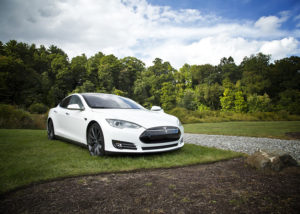 Tesla recently said that a million-mile electric vehicle (EV) battery is technologically feasible and that it should be available soon. According to a detailed study in the Journal of the Electrochemical Society, one way a long-lasting lithium-ion battery is made possible is if certain electrolytes work in conjunction with a nanomaterial coating on the cathode.
Tesla recently said that a million-mile electric vehicle (EV) battery is technologically feasible and that it should be available soon. According to a detailed study in the Journal of the Electrochemical Society, one way a long-lasting lithium-ion battery is made possible is if certain electrolytes work in conjunction with a nanomaterial coating on the cathode.
The surface, then, decreases the cathode’s resistance, which allows for less heat and better performance. It also preserves the cathode from degradation, which increases the battery’s longevity. The only challenge is that the nanomaterial coating process is costly, time-consuming, and energy-intensive.
Interestingly, however, Canadian upstart Nano One has patented a process that produces these monocrystalline cathodes quickly, efficiently, and cost-efficiently. Since the pilot plant was developed, Nano One has optimized its reactors, allowing the facility to generate 300 tons of cathode material per year — that’s enough for 2,400 EV batteries at 60kWh each. In fact, a full-scale production plant would generate 10 times that quantity.
Having provided the requirements of its $4 million grant from Sustainable Development Technology Canada (SDTC), a corporation created by the Canadian government to support Canadian businesses with the potential to become leaders in sustainable design, Nano One has been recognized for another $5 million grant to strengthen its “Scaling Advanced Battery Materials” project.
The company says it plans to use the funds in conjunction with three enterprises in the battery cathode market: lithium nickel manganese cobalt oxide (NMC), lithium iron phosphate (LFP), and lithium manganese nickel oxide (LMNO).
“In light of the global potential for zero-emissions and the OEM crusade for more extraordinary energy density, we believe that single-crystal NMC could add substantial value to electric vehicles and is a massive moment for Nano One,” said founder and CEO Dan Blondal. “Our LMN initiative is focused on high-voltage, power, and pertinence in solid-state batteries.”

A Tesla battery.
The cathode-making process
The above-mentioned study, which was partially sponsored by Tesla Canada, was based on the research of Jeff Dahn, a specialist in battery chemistry. Although the research concentrated on electrolytes, all of the batteries had a special coating on the cathodes that related to the surface that Nano One provides. The exception is that the cathodes were made using the standard process, which is more energy-intensive than Nano One’s patented method.
The conventional means of making monocrystalline NMC involves several days of intense heating, which regulates the crystalline structure and eliminates most of the fracture-prone grain edges. In addition to the process being energy-intensive and costly, crystals grow large during the process — making a high charge and discharge standards a challenge.
Ultimately, this is a multi-stage process, which limits the production capacity of a manufacturing plant.
As per Blondal, “Nano One’s monocrystalline NMC is formed by mixing all components in a one-pot aqueous reactor, such that all elements are homogeneously mixed with crystals appearing before the furnace. When fired in the furnace, the monocrystalline bits and the coatings form quickly at the same time. This bypasses the throughput, energy, and capital utilization issues.”
Additionally, the particles endure small, allowing high charge and discharge speeds, as lithium can get in and out more quickly with smaller particles.
A million-mile battery?
EVs are preferred to their internal combustion engine counterparts in virtually every aspect save for one: the fuel tank. Although superchargers and large battery capacities have improved alleviate range anxiety, quick charging tends to reduce a battery’s life.
Consequently, the battery continues to be the Achilles Heel of the electric vehicle, serving only about 10 years — less than half of the vehicle’s expected lifespan — and accounting for almost half the purchase price of the vehicle itself. A million-mile battery, improved by protective coatings that can withstand high charging prices, could be just what the doctor ordered.
